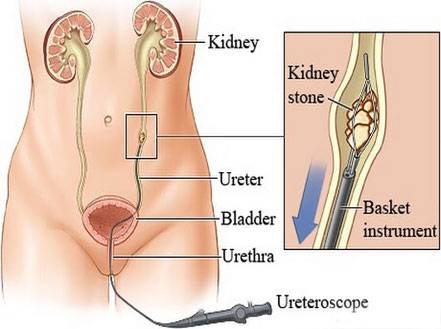URS (Ureteroscopy) is a common procedure used to diagnose and treat problems in the urinary tract, particularly kidney stones. Like any medical procedure, URS carries certain risks, including:
- Bleeding: There may be bleeding from the urinary tract during or after the procedure, which can range from mild to severe.
- Infection: There's a risk of urinary tract infection (UTI) following URS, especially if instruments are introduced into the urinary tract.
- Perforation: The ureter or bladder can be accidentally perforated during the procedure, leading to complications that may require further treatment.
- Stricture: Sometimes, the ureter can become narrowed (strictured) after URS, which may require additional procedures to correct.
- Pain: Pain during or after the procedure is common, especially when passing fragments of kidney stones or from irritation caused by the instruments.
- Urinary retention: Some patients may experience difficulty urinating after the procedure, which may require temporary catheterization.
- Residual stones: Despite successful removal of stones during URS, small stone fragments may be left behind, leading to the formation of new stones in the future.
- Reaction to anesthesia: Some individuals may have adverse reactions to the anesthesia used during the procedure.
- Fluid overload or electrolyte imbalance: Fluid used during the procedure can lead to fluid overload or electrolyte imbalances in some cases.
- Damage to surrounding organs: There's a risk of unintentional damage to nearby organs such as the bladder or the bowel during the procedure.
It's important for patients to discuss these risks with their healthcare provider before undergoing URS, as well as to follow post-procedure instructions carefully to minimize the likelihood of complications.





Comments